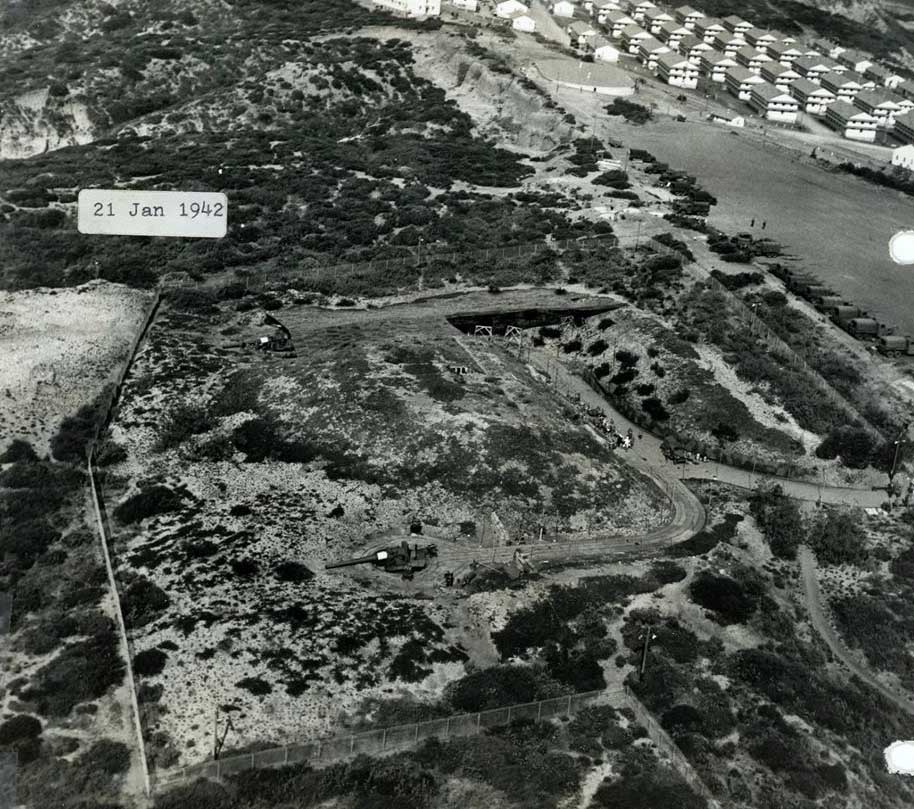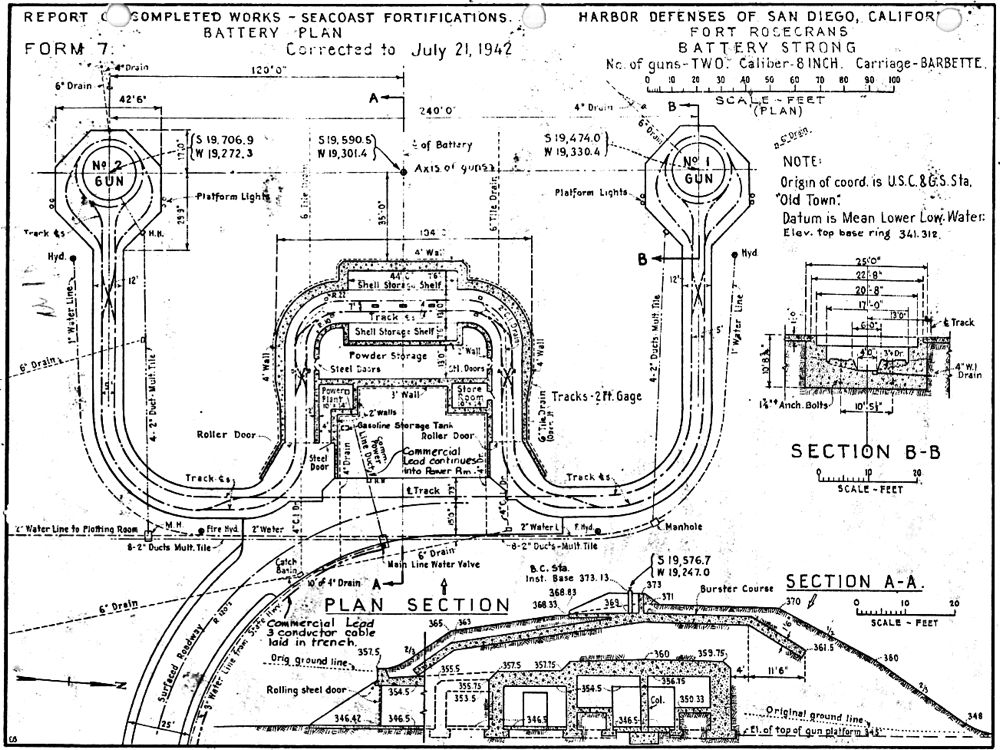
Battery Strong
Construction on Battery Strong began in early 1937. The engineers selected a final site on the ocean side of Point Loma toward the north end of the reservation. The guns were placed out in the open at two locations 240 feet apart and without any casemate protection as with the Battery Wallace original construction. The magazine was casemated and covered with sand. In 1937 the Ordnance Office notified the Chief of Engineers that it would be at least a year before the 8-inch Navy, 45-caliber guns would be ready for shipment. Also, ordnance would not complete the manufacture of the two barbette carriages until May 1938. Finally, in August 1940 the Ordnance Department announced that the carriages were completed and weapons would be proof-fired at Aberdeen Proving Grounds, Maryland. In April 1941, the Los Angeles District Engineer reported the mounting of the armament at Battery Strong.
Long before the 8-inch guns arrived at Fort Rosecrans, the Adjutant General announced that the battery was to be named in honor of the late Major General Frederick S. Strong, who graduated from West Point in 1880 and was appointed a lieutenant in the 4th Artillery. From 1916 to 1917 Brigadier General Strong commanded the Department of Hawaii. Promoted to Major General in 1917, he organized the 40th Division at Camp Kearny, California and took it to France in 1918. General Strong died in 1935 and was buried in Arlington National Cemetery.

